How Food Delivery Apps Earn: By Burning A Hole In Your Pocket And Your Health—All While You Cherish The Convenience They Offer!
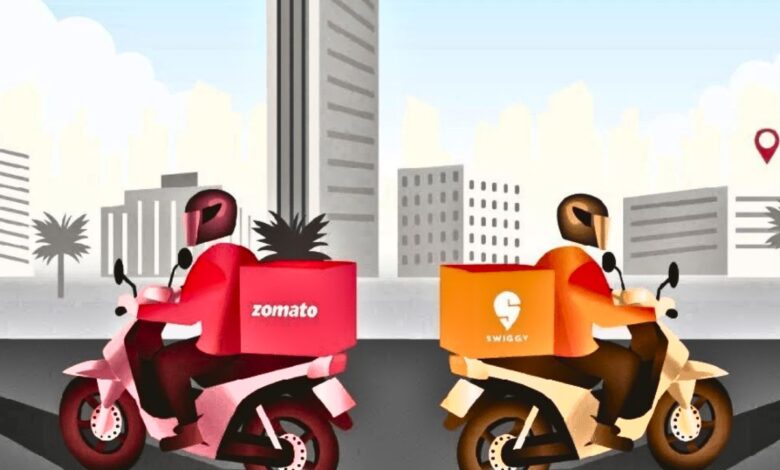
There was an era when our fathers used to properly dress up, take the carry bag and start the bike or ride the cycle to nearby ‘halwai’ or ‘restaurant’ to purchase our favourite snack. Then a time arrived when some ‘restaurants’ used to have their own delivery partners and they were able to gain the competitive edge of capturing a greater market share. And now, the new decade is all about food delivery platforms.
Whatever you want to eat, just ‘Do Zomato’ or just ‘Swiggy It’. And your favourite dish, whether it is a simple dish like MOMO or a specific delicacy like Mutton Biryani, everything will come to your doorstep just in minutes, and just with a single click.
But have you ever thought how much this single click is costing you? How the supremacy of convenience of ordering from food delivery apps is dominating the cash in your pockets? And at the end, how your convenience is fuelling the pockets of these startup founders?
Let’s dive in.
Manyatimes, you have seen posts in LinkedIn and X on how people get shocked that a particular food/foods when purchased from food delivery apps like Zomato and Swiggy, cost hefty as compared to the person walking into the restaurant and purchasing the meal. Many criticise the food delivery companies for charging hefty fees, whereas some defend them by saying that the companies are not running any NGO and they also have to generate profits. And hence, the charges that these companies put on customers is actually the cost of convenience that the customer pays while just sitting at home and getting the meal at one click.
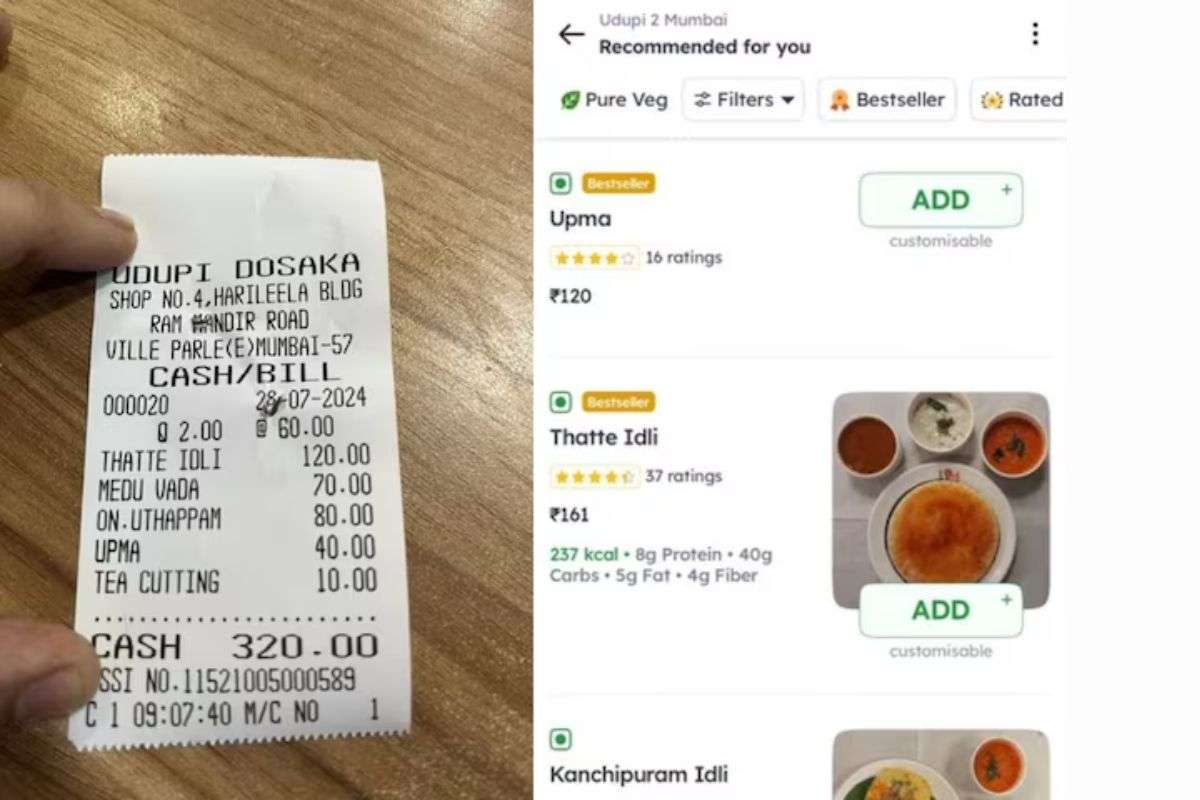
But the question arises ‘how much is the cost of convenience’? Also, are we really paying the cost of convenience or are falling prey to predatory pricing by these food delivery apps?
There is a lot of debate around the jacked-up pricing by Zomato and Swiggy. Let’s note the revenue generating model of these food delivery apps have mainly three components- advertising charges, commission from restaurants and charges from customers.
Were the customers are charged for convenience?
Platform Fees- The platform fee corresponds to the cost of purchasing on these platforms. It is one of the few ways that allow companies to get revenue directly from their customers. This charge is applied every time a customer orders a food item from Zomato or Swiggy.
- Zomato introduced a platform fee of ₹2 per order in August 2023.
- Increased it to ₹4 per order by January 2024.
- In April 2024, Zomato increased the fee to ₹5 per order in major cities like Bengaluru, Mumbai, Hyderabad, Lucknow, and the National Capital Region.
- In October 2024, Zomato increased the fee to ₹10 per order in certain cities to manage the festive rush.
- Swiggy was the first to introduce a platform fee, and experimented with a fee of ₹7 in Bengaluru before settling on ₹6. In October 2024, Swiggy increased its platform fee to ₹10 per order in response to Zomato’s increase.
The firms have gradually increased their platform fees in order to enhance their so-called ‘take rates,’ or the amount of money they make on each order. It is one of the supply chain channels that companies have direct control over and is a significant source of revenue. Customers will simply incur higher out-of-pocket expenses when using such apps to deliver. The decision comes as both food delivery behemoths strive to enhance their unit economics and raise their total sales and profits.
But the problem is not only in ever increasing platform fees. There are other hidden charges that come to haunt at the last time of checkout. These fees are, manyatimes, worthless.
Rain fee- Some examples are the rain fee, which Swiggy collects to offer incentive to its delivery riders to compensate them for the extra effort they put in during bad weather. However, there are some loopholes in this. It is alleged that the rain fees never went to the drivers. An article titled ‘Surge charges on rainy days not paid to delivery executives’ dated 05.08.2022, highlights discrepancies on these surge pricing models of food delivery companies. Similar kind of fees can be seen in quick commerce firm zepto as well, where they are charging a hefty INR 30 for rain!
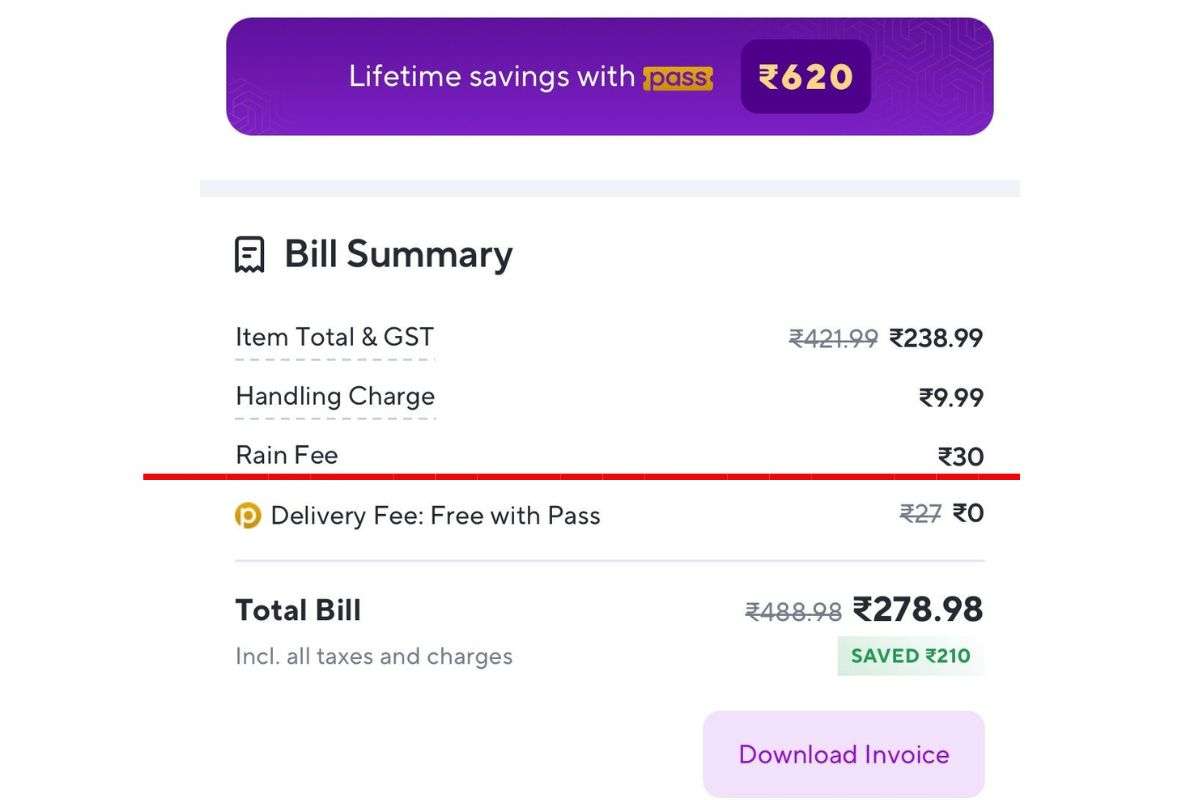
Priority Fee- Zomato has started piloting priority deliveries, enabling users to get their orders delivered faster by paying an extra fee of Rs 19-29 per order. For instance, a user in Bengaluru was given the option to pay an additional Rs 29 to avail of an order in 16-21 minutes, while the expected time of arrival otherwise was shown as 21 minutes. This was charged on Zomato gold subscribers as well.
Now, if you do not know ‘Zomato Gold’ is already a premium membership feature, so why a person who have purchased one premium is asked for paying more? This is the convenience we asked at the start of the article? What is the legitimate difference in getting the food at 16 mins and 21 mins? Is the instant gratification of getting the meal before others is so much that one is mindlessly paying such extra charges. By the way, do note that these priority fee pilot project came just days after Zomato paused its inter-city food delivery service called Intercity legends, which is in itself, a doubtful attempt!
Strategically Planned Fee- Furthermore, an article from September 2018 titled ‘Zomato Fraud- Gold Members left cheated with highly priced menu at Moksha Bukhara In Nagpur’ elaborates the smart moves these food delivery platforms employ to trick customers. The gold members, who are enticed by the promise of one free food or drink with every order at their gold partner restaurants, were surprised to discover a high-priced menu at the same restaurant they visited. Later, it was discovered that Moksha and Bukhara were designated separate restaurants, despite the fact that they were operating in the same hall and separated only by a wall.
While Moksha serves a regular menu, Bukhara, which is reportedly Zomato’s gold partner restaurant, offers a menu at rates nearly double those of Moksha’s menu. This caused a lot of confusion among the gold members, who were surprised to learn for the first time that the restaurant where they had been customers provides two menus in the form of two independent restaurants. Zomato has only collaborated with Bukhara, which offers a highly priced menu, leaving Moksha alone.
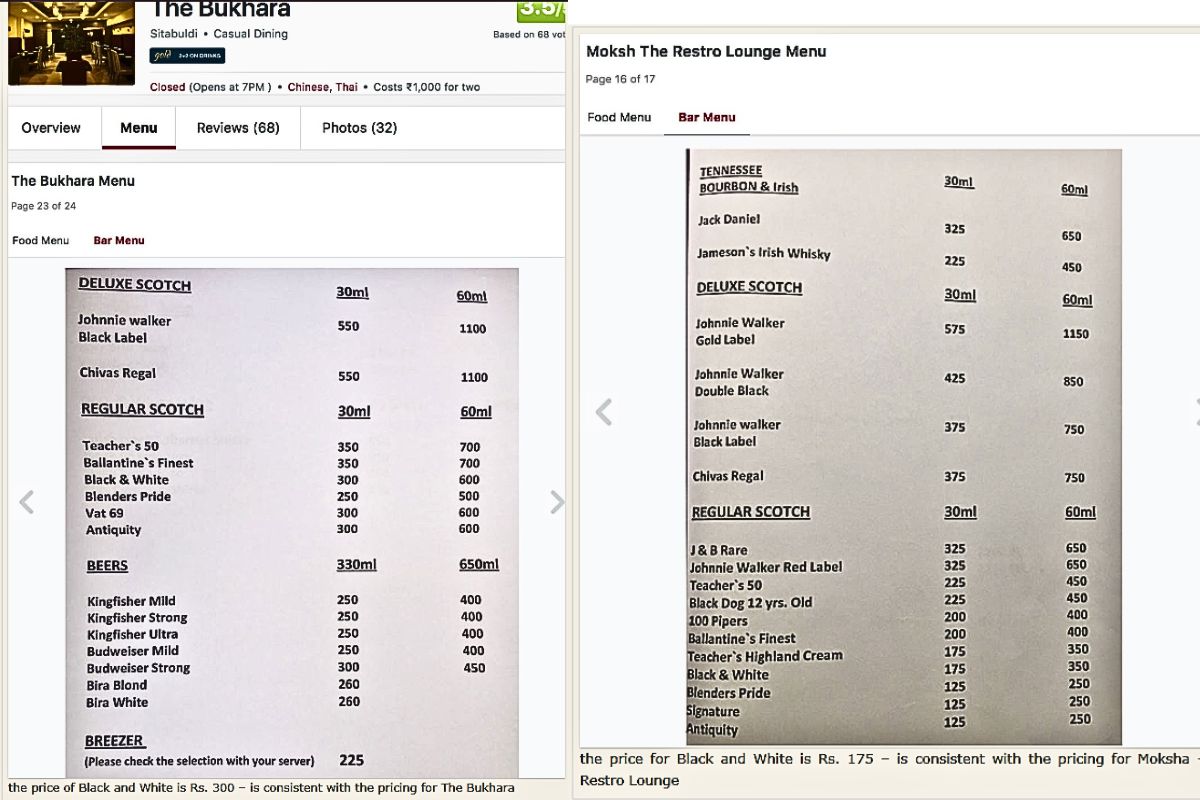
According to sources, Zomato has strategically partnered with restaurants that operate under two distinct names and give two different pricing. The catch is that it has drawn in high-end restaurants as its gold partner. In this method, Zomato and its gold partner restaurants dupe clients into paying double the amount in the name of offering a deal. Therefore, again think, what is the cost of your convenience?
Delivery fees- A report reveals incremental differences in delivery fees, such as 150-200 % higher delivery charges on online food deliveries. It states that where 46 % of restaurants don’t charge any delivery fees on their owned channels, most of them do indicate it on aggregator platforms. Moreover, delivery fees for dine-in restaurants have been found to be 6.5 higher on average compared to delivery-first restaurants on aggregator platforms.
Recently, such an incident came to light. The District Consumer Disputes Redressal Commission in Ranga Reddy has ruled against Swiggy for unfair trade practices after the food delivery service inflated delivery distances, resulting in overcharges to a customer. The court found the food delivery platform Swiggy guilty of these practices and ordered the company to pay a total of Rs 35,453 to the complainant, Emmadi Suresh Babu.
Babu, a Hyderabad resident, filed a complaint after purchasing a Swiggy One membership that included free delivery within a specific radius. On November 1, 2023, when he ordered meals, Swiggy reportedly upped the delivery distance from 9.7 kilometres to 14 kilometres, incurring a Rs 103 delivery cost despite his membership advantages. The court evaluated evidence, including Google Maps images submitted by Babu, and found considerable exaggeration in the delivery distance. Swiggy did not attend the proceedings, thus the court proceeded without their defence, relying on Babu’s affidavit and accompanying papers.
Another woman, Swati Mukund, in May 2024 shared on Instagram that she paid an INR 150 as delivery charges for ordering a cake which is just 1.8 km away from her place. Many other netizens vented out their emotions on that video and shared that similar problems have been served at plate by Swiggy to them also.
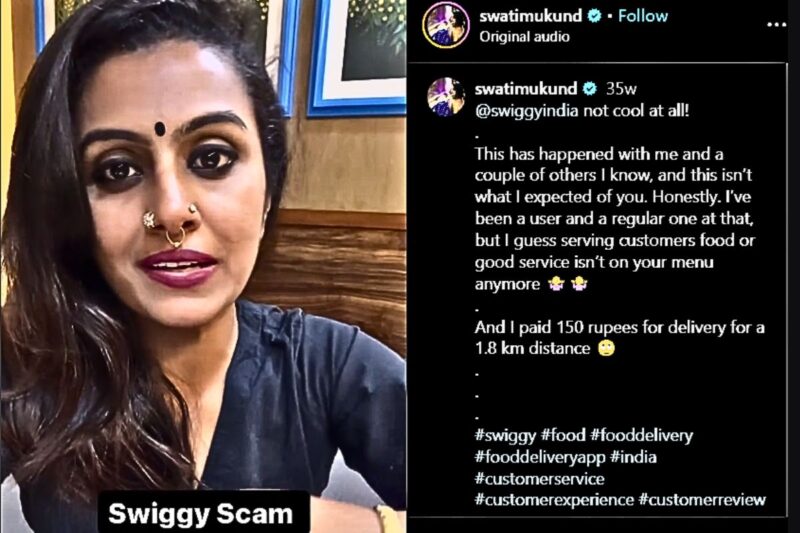
In March 2024, another iconic tale was under social media limelight when A Bengaluru-based Swiggy customer claimed that premium subscribers end up paying more rather than saving money while ordering food, because Swiggy offers discount coupons to non-members.The Swiggy One (premium subscriber) member would have to pay Rs 309 for the order while the non-member could apply a discount coupon and end up paying only Rs 241- noting that both were for the same order, from the same restaurant, to be delivered to the same delivery location at the same time. Wow, such a convenience on the pretext of a high class scam!
These kind of Membership Myths raises doubts about ‘Are the subscription benefits really helpful to members?’ According to the these incidents, a prominent aggregator’s premium subscription offers limited added value, with non-members often accessing similar benefits for orders over Rs 199.
Plus, do you know sugar is a luxury? Yes you read that right.
Sweeter The Tooth, Heavier The Bill? Well, a report finds that desserts incur a 15 per cent premium on aggregator platforms, while vegetarian items see an 11 per cent price bump compared to non-vegetarian food options.
Packaging and handling charges- Food aggregators charge Rs 2 more for packaging than restaurants, even though the packaging remains the same. Though this may seem insignificant for an individual order, when added up, this charge makes up for Rs 400 crores of the annual ecosystem revenues. It seems that restaurants with more branches tend to charge lower fees. Their delivery and packaging fees range from Rs 26 to Rs 118 depending on the scale of the restaurant, a report finds.
Base price of the item- An average aggregator premium of Rs 46 per dish (in hidden costs) is levied as compared to delivery orders placed on the restaurant’s channels. This translates to an additional annual financial burden of at least Rs 12,000 for the average Indian household in major metro/ tier-1 cities, the study states.
All these extravagant charges are not just only few cases. They are in huge numbers, as there is a whole report highlighting the ‘so-called convenience’! A recent report, about which we have discussed above, by The Mavericks India, a marketing agency, underlines all these various hidden charges and costs associated with popular food delivery platforms like Swiggy and Zomato. According to Chetan Mahajan, founder and CEO of The Mavericks India, “As convenience drives more consumers to food aggregators, the hidden expenses of delivery, packaging, and perceived membership advantages may sometimes add up to a major financial drain over time.”
To find these hidden expenses, the study examined price data from over 50 restaurants (including vegetarian and non-vegetarian options) across three aggregator platforms. Prices on these aggregator platforms were compared to those on the restaurants’ own platforms by adding each item to the basket one at a time, capturing the most precise pricing data and ensuring consistency.
What is the impact of all these things?
In the age of quick commerce, food delivery services have emerged as the go-to answer for those looking to satiate their needs with a few taps on the screen. Millions of Indians have embraced food delivery services for a variety of reasons, including convenience, indecisiveness, instant gratification, and the sheer pleasure of eating without having to prepare. However, underlying the attractiveness of this convenience, a complicated network of hidden fees quietly creeps up to your overall amount, giving burns to one’s pocket.
As food delivery becomes an increasingly important element of urban life, this data suggests a probable future for the sector. Potential and impending developments include drone deliveries, predictive meal alternatives based on your eating patterns, and even aggregators starting their own packaging companies. While these developments promise more convenience, they may potentially raise your online food delivery expenses even higher.
Moreover, apart from burn in finances, these food delivery apps are burning the health also. Recently, Union Minister Piyush Goyal showed his discontent about these e-commerce platforms, that they are making India a potato couch, which is already the diabetes and cancer capital of the world.

Therefore, for the sake of convenience…
So, next time, before using the phrase “Just Do Zomato” or “Swiggy It”, think before the health and finance burn that you are going to get. Millennials need to be smart enough about their personal and fiscal health choices, and the parents of Gen Z and Gen Alpha also need to cautious about what the kids are doing with the phones, being attentive about what they put, either in their mind or in their gut.
At first, these small things, or small expenses may sound harmless. But once a person gets addicted to these habits, it is very difficult to divert them from it, specially in the case of kids and teens. So, we do not say that these food delivery apps are harmful, but there is a limit till where they can go. Some sort of capping should be there by the regulatory bodies so that the consumers do not fall prey to the predatory pricing of the companies.
For those who use the phrase “simply a food app” without more explanation, let us value an app based on how significant it is in our everyday lives. From that perspective, a food app is of limited benefit to a financially meticulous person since they know what not to spend. The user will cherish flight/train booking apps and bill payment apps that save time and allow them to focus on more productive duties. These are what we may term innovation.




